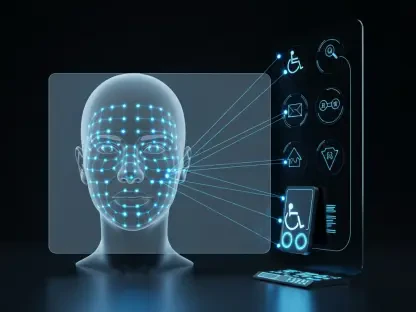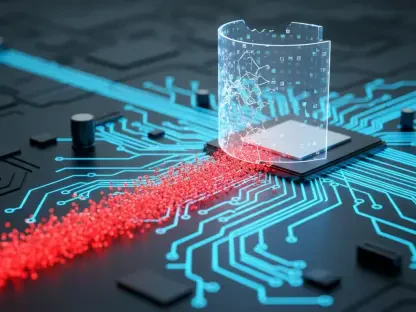Researchers from the University of Waterloo in Canada have developed an innovative automated model that detects snow coverage on photovoltaic (PV) panels in real-time and estimates the resulting energy losses. This cutting-edge model leverages image processing and deep learning techniques, specifically using a convolutional neural network (CNN) in combination with timelapse imagery, to accurately pinpoint areas of PV panels covered with snow compared to those that are snow-free. Given that snow coverage in cold climates can persist for days or even weeks, leading to up to a 34% reduction in energy output, the timely detection of snow accumulation is vital for optimizing the energy yield of PV systems. Moreover, autonomous snow detection on PV systems not only helps maximize energy output but also aids in maintaining the integrity of the solar panels and ensuring a stable power supply.
Acquire Dataset
The first step in developing this novel method involved the acquisition of an initial dataset. Researchers collected 250 images where PV panels were positioned against various backgrounds. This diverse collection was essential to ensure that the model could generalize well across different scenarios and backgrounds. The idea was to have a rich dataset that could expose the model to a variety of visual contexts, thereby making it robust and versatile. Each of these images served as a crucial component for training the model, providing it with the visual information needed to learn how to distinguish between snow-covered and snow-free areas on PV panels.
The researchers ensured that the images captured a wide range of conditions and settings, thus preparing the model to handle the complexities and variabilities that it would encounter in real-world applications. By starting with a base dataset of 250 images, the groundwork was laid for the subsequent steps, which involved enhancing and expanding this dataset to provide the model with an even more comprehensive training experience.
Enhance Images
Once the initial dataset was acquired, the next step was to enhance these images to create a more extensive dataset for training. Multiple image transformation techniques were employed to expand the dataset from the original 250 images to a more substantial 800 images. This expansion was crucial for providing the model with more data to learn from, thereby improving its accuracy and generalization capabilities. During this phase, the researchers manually created a binary black-and-white mask for each image. In these masks, white pixels represented the PV panels, while black pixels indicated the background.
This manual creation of masks was a painstaking but necessary process, as it provided the ground truth that the model would use to learn how to distinguish between PV panels and their backgrounds. By employing various image transformation methods, the researchers ensured that the model would encounter a diverse set of training examples, each with slightly different visual characteristics. This diversity was key to making the model robust and capable of handling different conditions and backgrounds in real-world scenarios.
Model Training
After enhancing the images and creating the necessary binary masks, the next critical step was the actual training of the model. All pairs of images and their corresponding masks were inputted into a U-Net Convolutional Neural Network (CNN), which is specifically optimized for image segmentation tasks. The U-Net architecture is particularly well-suited for this kind of task due to its ability to capture both high-level and low-level features, making it highly effective for segmenting images. During training, the model examined the dataset, learning to identify and segment PV panels based on the visual information provided in the images.
The training process involved the model comparing its segmentation results to the manually created masks. Whenever the model made errors, these errors were propagated back through the system, allowing the model to learn and improve over time. This iterative process of comparison and adjustment was essential for fine-tuning the model’s performance and ensuring that it could accurately identify PV panels in a variety of conditions. By the end of this training phase, the model had learned to effectively segment PV panels from their backgrounds, setting the stage for the next steps in the process.
Model Validation
With the model trained, the next step was to validate its performance against a reliable ground truth. This validation process was crucial for assessing the model’s accuracy and effectiveness in real-world applications. During this phase, the model’s segmentation results were compared to a set of ground truth images that had not been used during the training phase. These ground truth images provided a standard against which the model’s performance could be measured, allowing the researchers to evaluate how well the model had learned to identify and segment PV panels in various conditions.
The validation process involved a detailed analysis of the model’s segmentation results, looking at metrics such as the mean error and the Dice coefficient score. These metrics provided quantitative measures of the model’s accuracy, with lower mean error and higher Dice scores indicating better performance. By validating the model against a reliable ground truth, the researchers were able to confirm that the model was capable of accurately identifying PV panels and segmenting them from their backgrounds in a variety of conditions, setting the stage for its application in real-world scenarios.
Estimate Energy Loss
After acquiring the initial dataset, the next crucial step involved enhancing the images to create a more extensive set for training purposes. Several image transformation techniques were employed, increasing the dataset from the original 250 images to a considerably larger 800 images. This expansion was vital for supplying the model with a broader array of data, thereby enhancing its accuracy and capability to generalize. During this phase, the researchers painstakingly created binary black-and-white masks for each image. These masks used white pixels to represent the PV panels and black pixels to denote the background.
Though manual, this process was essential as it provided the ground truth for the model to learn the distinction between PV panels and their backgrounds. By applying various image transformation methods, researchers ensured the model encountered diverse training examples with slightly different visual characteristics. This diversity was key to making the model robust, enabling it to handle various conditions and backgrounds in real-world scenarios. The effort invested in creating these augmented datasets paid off by significantly improving the model’s performance and reliability.









